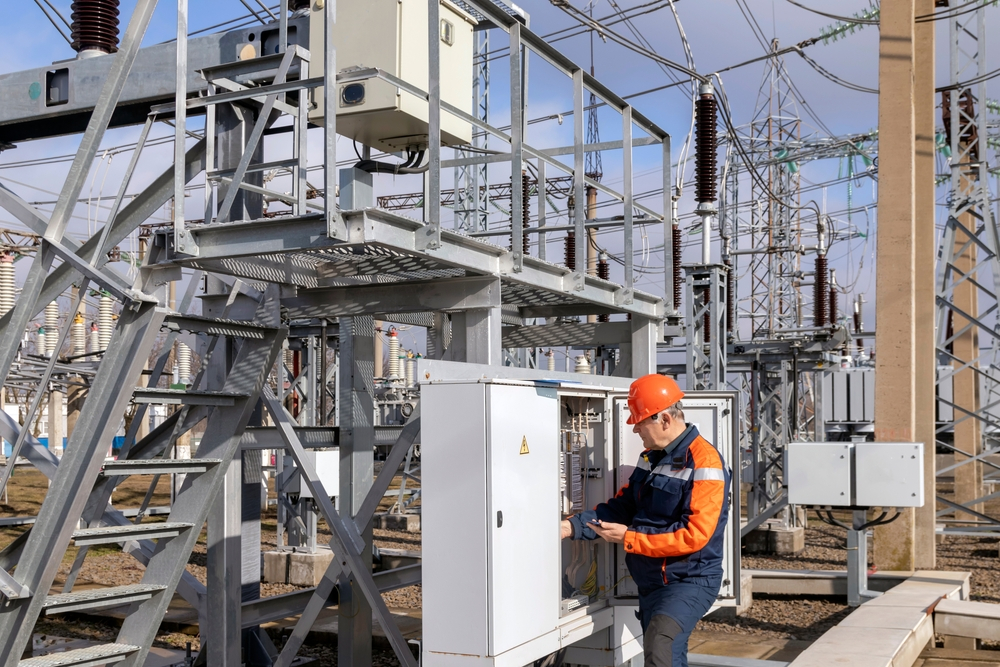The smart Trick of Roar Solutions That Nobody is Talking About
The smart Trick of Roar Solutions That Nobody is Talking About
Blog Article
9 Easy Facts About Roar Solutions Shown
Table of ContentsSee This Report on Roar SolutionsGet This Report about Roar SolutionsRoar Solutions Can Be Fun For Anyone
In such an ambience a fire or explosion is possible when three basic problems are satisfied. This is frequently described as the "hazardous location" or "combustion" triangular. In order to protect installations from a potential surge an approach of evaluating and classifying a potentially harmful area is called for. The purpose of this is to guarantee the appropriate option and setup of devices to ultimately stop a surge and to make sure safety and security of life.
(https://www.video-bookmark.com/bookmark/6634779/roar-solutions/)
No devices ought to be installed where the surface temperature level of the tools is above the ignition temperature of the given threat. Below are some usual dirt hazardous and their minimal ignition temperature level. Coal Dirt 380C 225C Polythene 420C (melts) Methyl Cellulose 420C 320C Starch 460C 435C Flour 490C 340C Sugar 490C 460C Grain Dirt 510C 300C Phenolic Material 530C > 450C Aluminium 590C > 450C PVC 700C > 450C Residue 810C 570C The chance of the risk existing in a focus high adequate to cause an ignition will differ from area to area.
In order to classify this threat an installment is separated right into areas of danger depending upon the amount of time the dangerous exists. These areas are referred to as Zones. For gases and vapours and dusts and fibres there are three zones. Zone 0 Area 20 An unsafe atmosphere is extremely most likely to be present and might exist for lengthy durations of time (> 1000 hours annually) or also continuously Area 1 Area 21 A dangerous atmosphere is feasible yet unlikely to be present for extended periods of time (> 10 450 C [842 F] A category of T6 suggests the minimal ignition temperature is > 85 C [185 F] Harmful area electrical devices maybe developed for usage in greater ambient temperatures. This would certainly showed on the score plate e.g. EExe II C T3 Ta + 60C( This implies at 60C ambient T3 will certainly not be gone beyond) T1 T1, T2, T3, T4, T5, T6 T2 T2, T3, T4, T5, T6 T3 T3, T4, T5, T6 T4 T4, T5, T6 T5 T5, T6 T6 T6 A T Course score of T1 suggests the maximum surface temperature level generated by the instrument at 40 C is 450 C. Assuming the connected T Course and Temperature score for the equipment are suitable for the location, you can always utilize an instrument with a more rigid Division score than required for the area. There isn't a clear solution to this concern regrettably. It truly does depend upon the sort of equipment and what repair work need to be executed. Tools with specific test procedures that can't be executed in the field in order to achieve/maintain 3rd party ranking. Must come back to the manufacturing facility if it is before the tools's service. Area Repair Service By Authorised Worker: Difficult screening may not be called for nonetheless particular procedures might need to be adhered to in order for the tools to preserve its third party rating. Authorised employees have to be used to carry out the work appropriately Fixing should be a like for like replacement. New component must be considered as a straight substitute requiring no special testing of the tools after the fixing is complete. Each tool with an unsafe score should be assessed individually. These are outlined at a high degree listed below, however, for more in-depth information, please refer straight to the guidelines.
Roar Solutions Things To Know Before You Get This
The equipment register is a thorough database of equipment records that consists of a minimum set of fields to recognize each item's area, technical parameters, Ex category, age, and ecological information. This info is crucial for monitoring and taking care of the tools effectively within hazardous locations. On the other hand, for periodic or RBI sampling inspections, the grade will be a combination of Comprehensive and Close inspections. The proportion of Detailed to Shut evaluations will be identified by the Equipment Danger, which is examined based upon ignition risk (the possibility of a source of ignition versus the possibility of a combustible atmosphere )and the dangerous area classification
( Area 0, 1, or 2). This variation will likewise affect the resourcing needs for job preparation. As soon as Great deals are defined, you can develop sampling strategies based on the sample size of each Great deal, which refers to the variety of arbitrary devices items to be evaluated. To figure out the needed example dimension, 2 facets need to be reviewed: the size of the Great deal and the group of inspection, which shows the degree of initiative that should be applied( lowered, normal, or raised )to the assessment of the Great deal. By integrating the category of assessment with the Lot dimension, you can then establish the proper rejection standards for an example, suggesting the Roar Solutions permitted variety of defective items found within that sample. For more details on this process, please refer to the Power Institute Standards. The IEC 60079 standard recommends that the optimum period between evaluations ought to not exceed three years. EEHA inspections will likewise be performed beyond RBI projects as component of set up maintenance and devices overhauls or repair services. These assessments can be credited towards the RBI sample dimensions within the impacted Great deals. EEHA inspections are performed to identify mistakes in electrical tools. A heavy racking up system is important, as a solitary tool may have numerous mistakes, each with differing degrees of ignition danger. If the consolidated score of both assessments is much less than twice the mistake score, the Great deal is regarded acceptable. If the Whole lot is still considered inappropriate, it has to go through a full inspection or reason, which might trigger stricter evaluation methods. Accepted Whole lot: The sources of any kind of mistakes are determined. If an usual failure mode is discovered, added devices may require examination and repair service. Mistakes are classified by intensity( Safety, Stability, Home cleaning ), guaranteeing that immediate issues are assessed and addressed immediately to alleviate any effect on security or procedures. The EEHA database must track and record the lifecycle of mistakes together with the restorative actions taken. Carrying out a durable Risk-Based Inspection( RBI )strategy is important for ensuring conformity and safety in taking care of Electric Devices in Hazardous Areas( EEHA) (eeha courses). Automated Fault Rating and Lifecycle Management: Effortlessly manage mistakes and track their lifecycle to enhance evaluation accuracy. The intro of this assistance for risk-based inspection additionally reinforces Inspectivity's setting as a best-in-class solution for governing compliance, as well as for any asset-centric inspection use situation. If you have an interest in discovering more, we invite you to ask for a demo and uncover exactly how our solution can transform your EEHA management procedures.
The Single Strategy To Use For Roar Solutions

In regards to explosive risk, a harmful location is an atmosphere in which an eruptive ambience exists (or may be expected to be existing) in quantities that need unique precautions for the building and construction, installation and usage of devices. eeha courses. In this post we discover the obstacles encountered in the workplace, the threat control steps, and the needed proficiencies to work safely
It is a repercussion of modern-day life that we manufacture, keep or take care of a variety of gases or liquids that are regarded flammable, and a series of dusts that are regarded combustible. These compounds can, in certain conditions, develop eruptive atmospheres and these can have significant and awful effects. Most of us know with the fire triangle eliminate any kind of among the three aspects and the fire can not occur, however what does this mean in the context of unsafe areas? When breaking this down into its most basic terms it is basically: a combination of a specific quantity of launch or leak of a specific compound or material, blending with ambient oxygen, and the existence of a source of ignition.
In most circumstances, we can do little regarding the levels of oxygen in the air, yet we can have substantial influence on sources of ignition, for instance electrical tools. Unsafe locations are recorded on the hazardous location classification illustration and are determined on-site by the triangular "EX LOVER" sign. Below, among other essential details, areas are split into three types depending upon the hazard, the possibility and period that an eruptive atmosphere will exist; Zone 0 or 20 is considered one of the most harmful and Zone 2 or 22 is considered the least.
Report this page